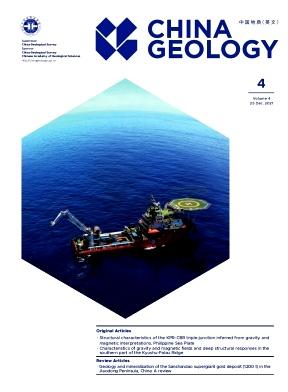Multi-compartmental migration and ecological-health risks of trace metals in Dexing mining concentration areas: A holistic quantitative assessment
IF 4.7
3区 地球科学
Q1 GEOSCIENCES, MULTIDISCIPLINARY
引用次数: 0
Abstract
To address the critical gap in linking multi-compartmental transfer with risks of trace metals (Cd, Pb, As, Cr, Ni) in mining environments. This study systematically investigated the trans-media migration of Cd, Pb, As, Cr, and Ni in China’s Dexing copper mining district through paired sampling of water-amphibians, soil-earthworms, and air-lichens. Advanced methodologies were employed, including ICP-MS quantification for heavy metals, geochemical indices (Igeo, BCF, BAF) to assess bioavailability, NMDS for source apportionment, and HPLC to detect DNA methylation alterations. Aquatic systems exhibited severe Cd/Pb enrichment (16.25–24.42 μg/L; 11–15× WHO limits), while agricultural soils showed extreme Cd contamination (1.5 mg/kg; 15× background). Biota displayed metal-specific accumulation: frogs achieved BCFs >1,000 for Pb/Cd, earthworms showed pH-modulated BAFs >2.5 for Cd/As, and lichens recorded 100–1,000× atmospheric Cr enrichment. NMDS resolved three contamination pathways: mining-derived Cd/Pb/As (MDS1 = 2.56), atmospheric Cr (PC2 = 1.84), and geogenic Ni. Cd dominated ecological risks (Eri = 554.25; RI 300), while atmospheric Cr drove carcinogenic risks (TCR = 4.11×10−5) exceeding safety thresholds. The source-media-biota-risk framework pioneers the integration of geochemical transport with epigenetic toxicity biomarkers, demonstrating that sub-lethal Cd/Pb exposure induces genome-wide DNA hypomethylation (2.4%–6.6% reduction; ρ = −0.71 to −0.91). This paradigm shift prioritizes bioavailability-informed regulations over concentration-based metrics, offering actionable strategies for sustainable development goals-aligned mining pollution control.
德兴矿区微量金属多区间迁移与生态健康风险综合定量评价
解决矿山环境中多区间转移与微量金属(Cd、Pb、As、Cr、Ni)风险之间的关键差距。本研究通过对水陆两栖动物、土壤蚯蚓和空气地衣进行配对取样,系统地研究了中国德兴铜矿区Cd、Pb、As、Cr和Ni的跨介质迁移。采用了先进的方法,包括ICP-MS定量测定重金属,地球化学指数(Igeo, BCF, BAF)评估生物利用度,NMDS分析来源,HPLC检测DNA甲基化改变。水体系统Cd/Pb富集严重(16.25 ~ 24.42 μg/L);11 - 15倍WHO限值),而农业土壤镉污染严重(1.5 mg/kg;15×背景)。生物群表现出金属特异性积累:青蛙的Pb/Cd达到了BCFs >; 1000,蚯蚓的Cd/As达到了ph调节的bfs >;2.5,地衣记录了100 - 1000倍的大气Cr富集。NMDS分析了三种污染途径:矿源Cd/Pb/As (MDS1 = 2.56)、大气Cr (PC2 = 1.84)和地源Ni。Cd主导生态风险(Eri = 554.25;大气中Cr的致癌风险(TCR = 4.11×10−5)超过安全阈值。源-介质-生物群风险框架率先将地球化学运输与表观遗传毒性生物标志物相结合,表明亚致死Cd/Pb暴露可诱导全基因组DNA低甲基化(减少2.4%-6.6%;ρ =−0.71至−0.91)。这种范式转变优先考虑基于生物利用度的法规,而不是基于浓度的指标,为符合可持续发展目标的采矿污染控制提供了可行的战略。
本文章由计算机程序翻译,如有差异,请以英文原文为准。
求助全文
约1分钟内获得全文
求助全文

 求助内容:
求助内容: 应助结果提醒方式:
应助结果提醒方式:


